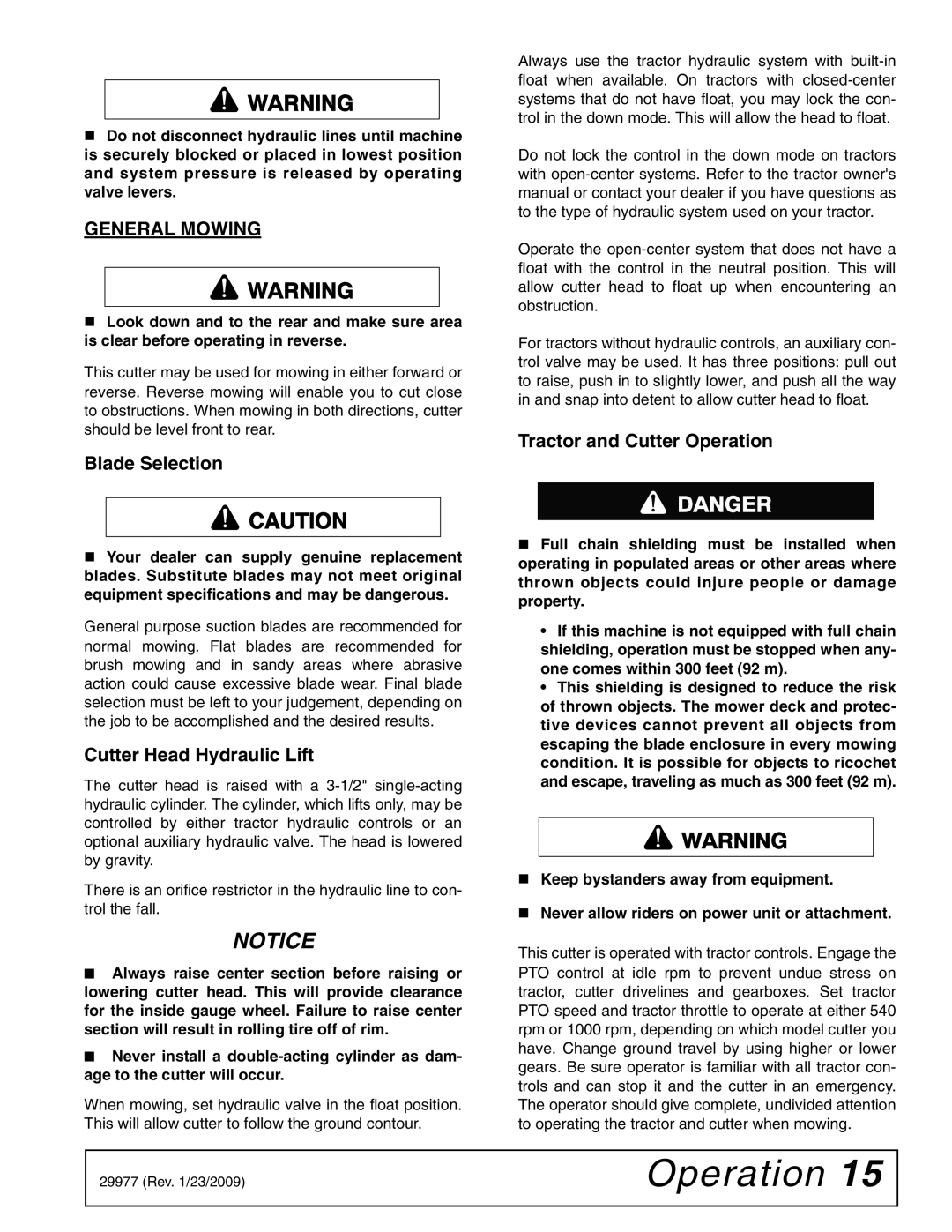
Do not disconnect hydraulic lines until machine is securely blocked or placed in lowest position and system pressure is released by operating valve levers.
GENERAL MOWING
Look down and to the rear and make sure area is clear before operating in reverse.
This cutter may be used for mowing in either forward or reverse. Reverse mowing will enable you to cut close to obstructions. When mowing in both directions, cutter should be level front to rear.
Blade Selection
![]() CAUTION
CAUTION
Your dealer can supply genuine replacement blades. Substitute blades may not meet original equipment specifications and may be dangerous.
General purpose suction blades are recommended for normal mowing. Flat blades are recommended for brush mowing and in sandy areas where abrasive action could cause excessive blade wear. Final blade selection must be left to your judgement, depending on the job to be accomplished and the desired results.
Cutter Head Hydraulic Lift
The cutter head is raised with a
There is an orifice restrictor in the hydraulic line to con- trol the fall.
NOTICE
■Always raise center section before raising or lowering cutter head. This will provide clearance for the inside gauge wheel. Failure to raise center section will result in rolling tire off of rim.
■Never install a
When mowing, set hydraulic valve in the float position. This will allow cutter to follow the ground contour.
Always use the tractor hydraulic system with
Do not lock the control in the down mode on tractors with
Operate the
For tractors without hydraulic controls, an auxiliary con- trol valve may be used. It has three positions: pull out to raise, push in to slightly lower, and push all the way in and snap into detent to allow cutter head to float.
Tractor and Cutter Operation
Full chain shielding must be installed when operating in populated areas or other areas where thrown objects could injure people or damage property.
•If this machine is not equipped with full chain shielding, operation must be stopped when any- one comes within 300 feet (92 m).
•This shielding is designed to reduce the risk of thrown objects. The mower deck and protec- tive devices cannot prevent all objects from escaping the blade enclosure in every mowing condition. It is possible for objects to ricochet and escape, traveling as much as 300 feet (92 m).
Keep bystanders away from equipment.
Never allow riders on power unit or attachment.
This cutter is operated with tractor controls. Engage the PTO control at idle rpm to prevent undue stress on tractor, cutter drivelines and gearboxes. Set tractor PTO speed and tractor throttle to operate at either 540 rpm or 1000 rpm, depending on which model cutter you have. Change ground travel by using higher or lower gears. Be sure operator is familiar with all tractor con- trols and can stop it and the cutter in an emergency. The operator should give complete, undivided attention to operating the tractor and cutter when mowing.
29977 (Rev. 1/23/2009) | Operation 15 |
|
|
